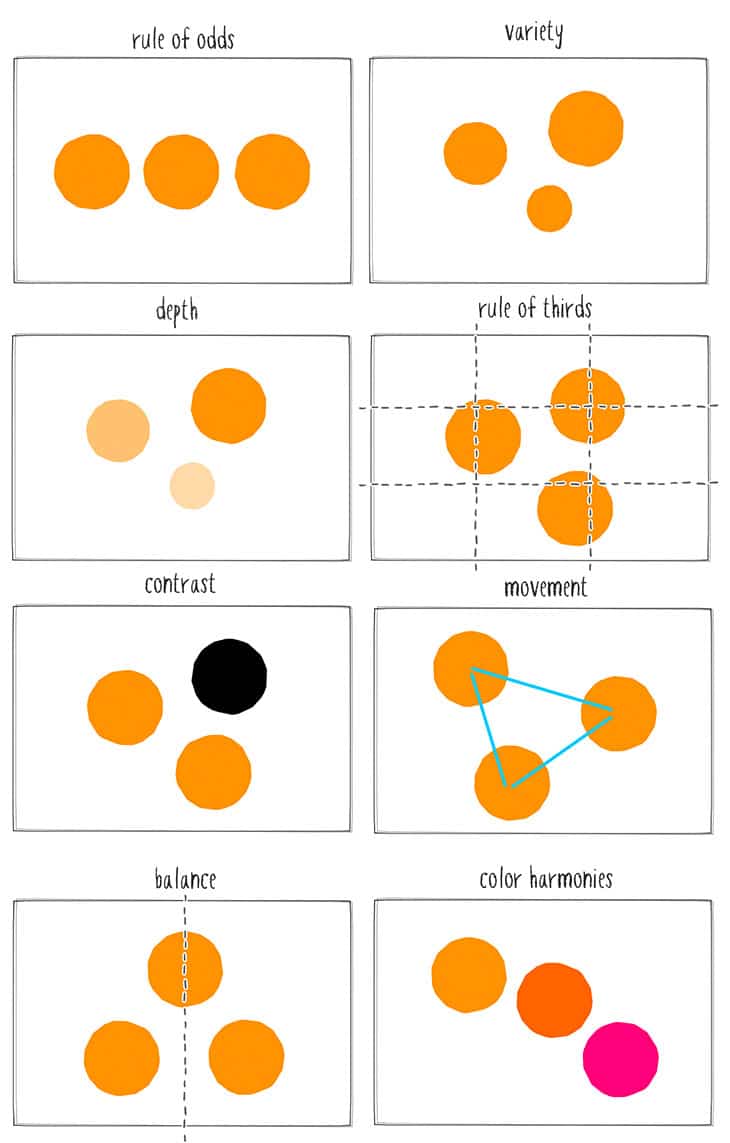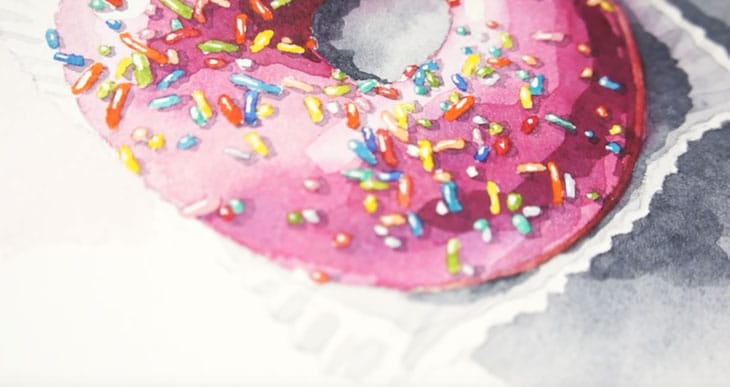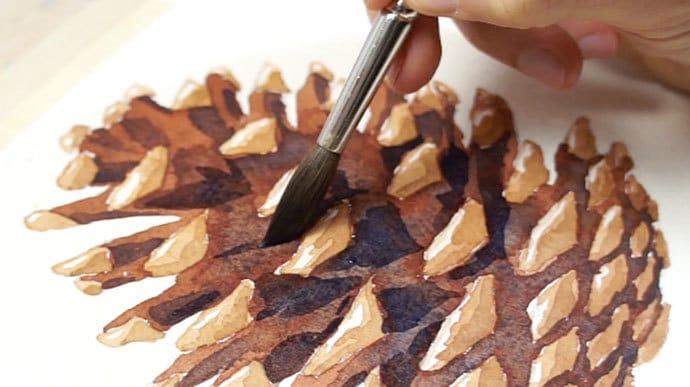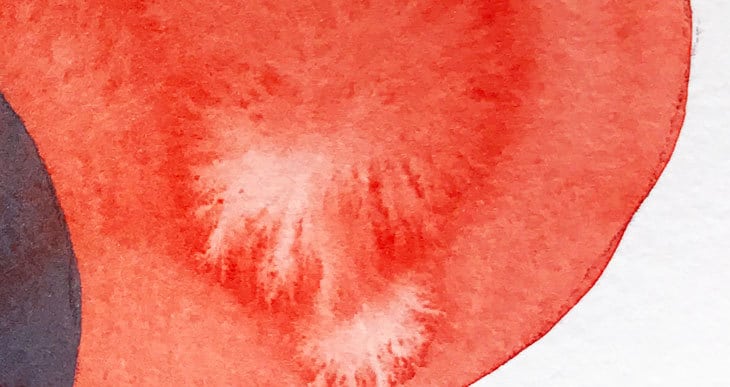What Makes a Good Painting (3 Things you Need to Know)

What is it that makes a painting “good”?
I was working on something recently and started thinking about this question…
Let me start by saying, this is a practical guide, not a subjective opinion.
There are plenty of articles talking about the various components of good art, or what makes a good painting.
For example, qualities like “originality” and “emotion”, could be considered important ingredients of “good art”. But these things are both fairly subjective and everybody interprets them differently. It’s a very personal and emotive experience.
(After all… Who am I to say that a Rembrandt is better than a Picasso, or vice versa)
However, I think a lot of us are not trying to make masterpieces but just good art.
So with that in mind…
I believe there are a number of practical things that you can learn to help make your artwork better!
Want to know more ?
Grab yourself a cup of tea and let’s get stuck in.
By the way, this article is going to be part of a series. The subjects I talk about here are so vast that they would probably fill an entire book. So in the future I’ll be breaking down many of the different parts into smaller “bite-sized” lessons.
What Makes a Good Painting?
From a practical point of view, a good painting can be made using three things: technique, observation, and design. Each of these things are learnable skills that anyone can put into practice to make better artwork.
So what the heck am I talking about ?
Below I’ll describe what these different skill sets really mean…
First, a quick word about why you should even care!
I know a lot of you are probably struggling with more basic ideas like “what paints to buy” or “how to paint a uniform wash without it looking like a Jackson Pollock splatter painting”. But many artists don’t consider these additional skills. I think that’s a shame, because when used together they can help take your artwork to another level.
After all…
We could ask ourselves why we paint in the first place. For me personally I think it’s for a sense of fulfillment and creative satisfaction. There’s also the pleasure and enjoyment of the painting process itself.
But in order to be happy and fulfilled by the end result, surely the objective is to make something good?
I think these fundamental skills of “technique, observation, and design” can help make that happen!
What are the qualities of a good painting?
1. Artistic Techniques
This is the easiest part to understand.
This refers to your ability to handle your artistic tools and your skill in handling the medium. (for example, watercolor paints, but the same applies to all popular mediums like gouache, acrylic, oil paints, pen and ink, etc. They all have their own specific methods to be learned).
Techniques are what you learn to control and slowly master the painting process. This is the practical side of putting brush to paper and obtaining (more or less) the desired result.
I say “more or less” because there’s often an element of surprise with watercolors!
In watercolor painting, your artistic technique depends on some of the following:
- Brush handling skills
- Familiarity with paper, paint, and brushes
- Watercolor washes (flat, graduated, or variegated)
- Wet-on-wet painting techniques
- Wet-on-dry techniques
- Glazing and layering
- Dry brush
- Lifting
- Reserving whites and masking techniques
- Various texture effects (granulation, watercolor blooms, salt, alcohol etc.)
- Underpainting
- Color mixing
These techniques are the building blocks to getting the best out of the painting process and eventually controlling the medium. This is one of the fundamental things that lead to good paintings.
“If you’d like to delve deeper into some of these techniques, you’ll find several detailed articles by following the links above.”
Learning techniques is an essential first step, but even if you can master the technical skills, you still need decent “observation” to produce good paintings.
But what do I mean by “observation”?
2. Observation in Art
Observation in art refers to the skill of seeing things in a new way and translating what you see into shapes on paper. Developing this skill allows you to observe and interpret real-world subjects more efficiently and produce the illusion of three-dimensional space on a flat sheet of paper.
It’s a question of perception.
It’s the way you seethings that’s important, not what you see.
For example, when they look at a flower, most people think “flower”!
As an artist, you need to ignore the fact that this is a flower and instead focus on things like shapes, contours, and colors of different tonal values.

An artist’s observational skill is about learning to see the different shapes of various colors and tones and then accurately interpreting what you see onto paper.
And like anything else, it can be learned. But it takes practice.
Values play a significant role in learning how to see like an artist. Once you understand the importance of values in your artwork, you can really improve your paintings.
Artistic observation includes things like the following:
- Understanding values in art
- Becoming a better judge of values and color
- Value studies
- Color matching (i.e., mixing the color that you see)
- Seeing the big shapes among the detail
“Again, you’ll find more detailed articles about some of these topics by following the links above.”
3. Design
Design in art refers to what most of us call composition. This is an often-overlooked ingredient of successful paintings. Artists use various tools, devices, rules, and methods to achieve a good composition.
Composition is about arranging the elements of a painting within the boundaries of your picture plane to create an aesthetic effect that is pleasing to the eye.
You might not think of composition as a skill, but there is definitely a knack to achieving good composition. By developing your knowledge of composition and trying to practice different design methods, you slowly increase your composition skills.
In other words, you can develop an eye for what “works.”
And good composition can really improve a painting.
With that in mind, some common tools and strategies that help make a strong composition include:
- Correctly setting up a still life, portrait, or landscape
- Groups of odd numbers
- Variety
- Focal points
- The rule of thirds
- Contrast
- Creating movement
- Leading the eye
- Balance
- Color harmonies

Let me quickly explain some of these ideas… groups of odd numbers are said to be more interesting than even numbers. Variety is also a key ingredient to good composition – use various shapes, sizes, colors, and distances to set up your compositions. It’s also good to think about your focal point. A couple of quick methods for attracting the eye to the focal point are the rule of thirds, or the use of contrast. Contrast works because the point of highest contrast attracts the eye. Creating movement is a good way to generate interest, and also lead the eye through a painting. The distribution of elements to create a balanced feeling and the use of color harmonies are also considered good design elements in a composition.
Don’t forget…
Composition is a vast subject.
I know some of these ideas probably seem unfamiliar or mysterious, so if you’d like to learn more about any of these composition strategies follow the links to the articles in the list above.
Also, in future lessons (In my following videos), I’ll detail how to use these design rules to set up a still life and create a good still life composition.
What Makes Art Good?
Keep in mind…
Any subject can make a good painting. It is not the subject itself that makes good art. It’s the way the subject is interpreted by the artist through his technical, observational, and compositional skills.
As you can see, a good painting results from successfully combining each of these abilities (technique, observation, and design) into a harmonious and aesthetically pleasing result.
You can really bring your artwork to life by applying some of these ideas!







Wow what a spectacular and informative email with lovely tutorials! How generous ! Thank you so much I will learn so much. Much appreciated!
Gabrielle Cragg
Thanks Gabrielle!
Have fun with your artwork!
How to say it? Thank you seems not to be enough… I wish I were nearby and had the chance to watch you painting, and talking about art, and having toghether a cup of Jasmin tea. Your passion is very helpful for us, the… wannabeartists. And inspiring. And pushing us to do more, to be better.
As I said previously “thank you” is not enough.
Have a quiet Christmas!
Sincerely, Adriana
Thanks you so much for your kind comment Adriana!
Have a wonderful Christmas yourself 🙂
Thank you for your informative and encouraging emails and articles! I don’t always click, but when I do it’s always good. I just finished my first acrylic painting and am wanting to try watercolor again as I am starting to understand the brushes a bit more. I’ve always used pencils before this. Is there a way to learn watercolor from a pencil perspective? Lol it’s a stretch but had to ask.
Hi Samantha !
Glad you clicked 🙂
I there are some similarities between watercolor and colored pencils… Layering (glazing) colors with pencils has a similar effect to layering watercolor.
But the fact that you paint and draw is already a big step towards learning watercolor. But it’s true watercolor handles pretty differently compared to acrylic 🙂
Anthony, I read your email mail messages whenever they hit my in box. I feel compelled to tell you how helpful they are, either for new information or for good reminders. Your writing is clear, concise, and so well organized, impressively so. As a retired teacher, I appreciate it.
I am just learning to use watercolor for paintings. I am not an artist. I am and will always be a hobbies at best. I’ve searched online for tutorials, lessons, examples, and yours are the best I’ve found. Maybe next year I’ll have enough extra money to sign up for a real class.
Hi Mary
It’s wonderful to hear you’re getting into watercolors!
Thanks for the kind comments 🙂
take care…